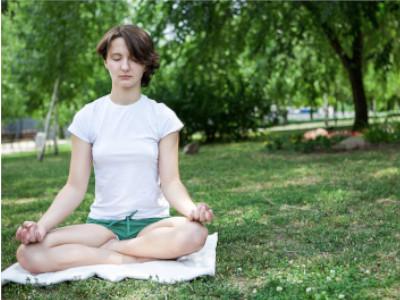
- Published on 27-Apr-2022
- 0 Likes
- 0 Comments
- 319 Times Read
Are you having a hard time sleeping? Is your mind too active that even when you do go to sleep you are still restless and do not sleep deeply? There are a lot of theories and opinions about how much sleep a person needs, it varies according to health, activity and circumstances. But it is a fact that the deeper and more peaceful the sleep is, the more rested we feel the next morning.
Sleep meditation is a form of meditation that helps you relax your mind and releases it of stress that results to a more peaceful and deep sleep. There are many ways of sleep meditation, but you may want to follow these steps first before performing sleep meditation to prepare your body and promote a deeper and more restful sleep:
Slow Down before Sleep Meditation
Before going to bed, start to slow down. Stop heavy mental activity; write down what you need to do the next day and leave the list in the other room. These would allow you to clear your mind and let the energy start coalescing to get what you want done accomplished before you start the sleep meditation. If there are other things that are on your mind, turn it over to a higher unemployed power that needs the activity for the night. Feel complete about the day, and acknowledge what you have accomplished and lessons learned. Forgive yourself for anything that bothers you and list five things you are grateful for. For short, devote the next hours to peaceful, unoccupied sleep.
Eating Habits before Sleep Meditation
Eat at least two and a half hours before you go to bed. Eating just before going to sleep gets your body tied up with digestion and its hard to sleep deeply. Be conscious of what you eat, no animal protein, fried or heavy foods. Eat lightly for an evening meal. Easily digested dishes are the best for the evening meal and will prepare your body for the sleep meditation, and avoid dairy because it makes it difficult to get up the next day.
Practice the Left Nostril Breathing before Sleep Meditation
The two nostrils are associated with two different energies. We are energized and stimulated when we breathe to through the right nostril, and when we breathe through the left we relax and calm down. Approximately after every two and a half hours, our breath naturally changes dominant nostrils. After eating, our nostrils will change to the left to accommodate the energy needed to digest food, the reason why we feel sleepy after eating. The dominant nostril is the nostril that is easy to breathe through when you block the other nostril. It is useful before going to bed, to sit quietly and block off the right nostril and breathe long and deeply through the left nostril. Slowing down the breath to four or less breaths per minute can facilitate sleep.
Bedtime or Sleep Meditation Shabad Kriya (chanting the mantra)
If you practice this sleep meditation on a regular basis, once a week or even every night, your sleep will be deep and relaxed. The control of the rhythm of the breath strengthens the nervous system and regenerates nerves. After a few months of practicing this sleep meditation, the rhythm of your breath will be subconsciously regulated and eventually you will internally chant the mantra and hear it in your daily activities. This is a good meditation to recover from the daily fatigue caused by normal daily stress travel and even jet lag.
DIRECTIONS
MUDRA-HAND POSITION
Sit in Easy Pose with a straight spine. Hands are in the lap, palms up, right hand resting on top of left and the thumbs touch and face forward.
EYES
Focus the eyes at the tip of the nose with the eyes about 9/10th closed. You can do several ways to do help you make easy looking at the tip of the nose. One would be, to bring your forefinger in front of your face and look at it. Keep looking at the forefinger and slowly bring the forefinger to the tip of the nose. To facilitate the concentration at the tip of the nose, do the following exercise. Bring the arms out to your sides parallel to the ground, palms up. Do breath of fire for 1-3 minutes.
This exercise balances the right and left hemispheres of the brain, which makes it easier to maintain the focus of the two eyes. Focusing the eye at the tip of the nose causes the optic nerves to cross at the third eye; it is easier to bring your mental focus to the third eye while the eyes are directed at the tip of the nose. Both the pineal and the pituitary glands and the area between them are stimulated by this eye posture, which has the effect of breaking old habits and creating new ones.
This meditation will help you to sleep.




0 Comments